The Eight Extant Species Of Pelicans
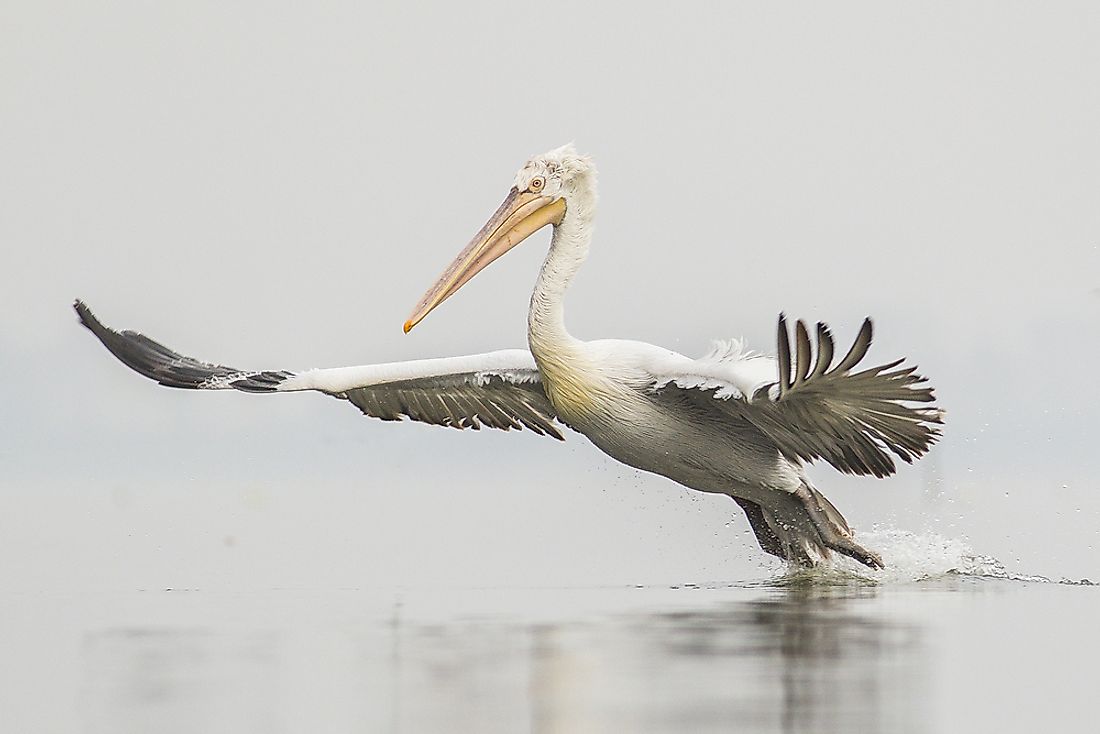
Pelicans are any of the eight species of aquatic birds of the genus Pelecanus and family Pelecanidae. The most distinctive characteristic of these birds is their long beak with a throat pouch. The design of the beak helps the birds scoop up contents from water and drain water before swallowing their food. These gregarious birds are known to breed in colonies, hunt in groups, and migrate in flocks. Over the years, the population of pelicans has been decreasing due to several factors like habitat destruction, environmental pollution, human persecution, etc.
8. American White Pelican
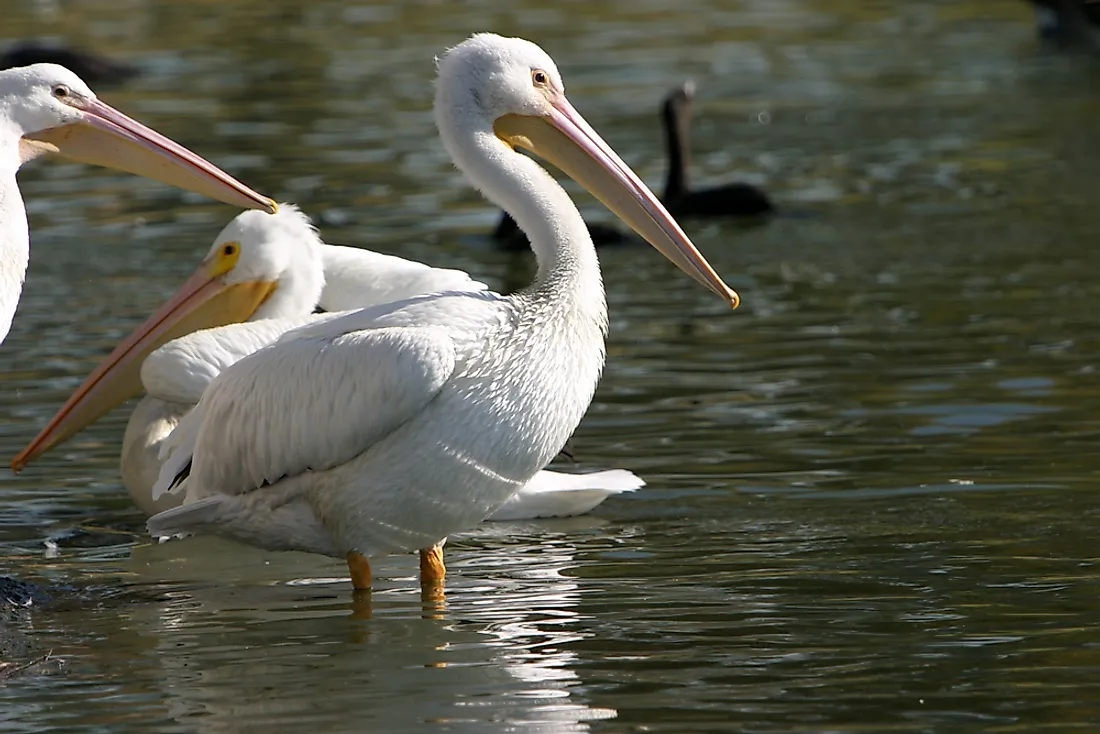
The Pelecanus erythrorhynchos is a large bird that breeds in the interior regions of North America and migrates to the warmer areas of Central and South America in the winter. The adult bird has a size of about 130 to 180 cm, bright white plumage, black remiges, a yellowish hue on the breast, and a vivid orange colored iris and bill (in the breeding season). The American white pelican also displays a bill “horn” in the breeding season. These birds nest in islands of remote lakes within their range. The birds catch their prey, mostly fish while swimming in the water. They often forage in groups and also exhibit the habit of kleptoparasitism where they steal the catch of other birds. The American white pelicans are colonial breeders that breed and nest between March to early June.
7. Brown Pelican
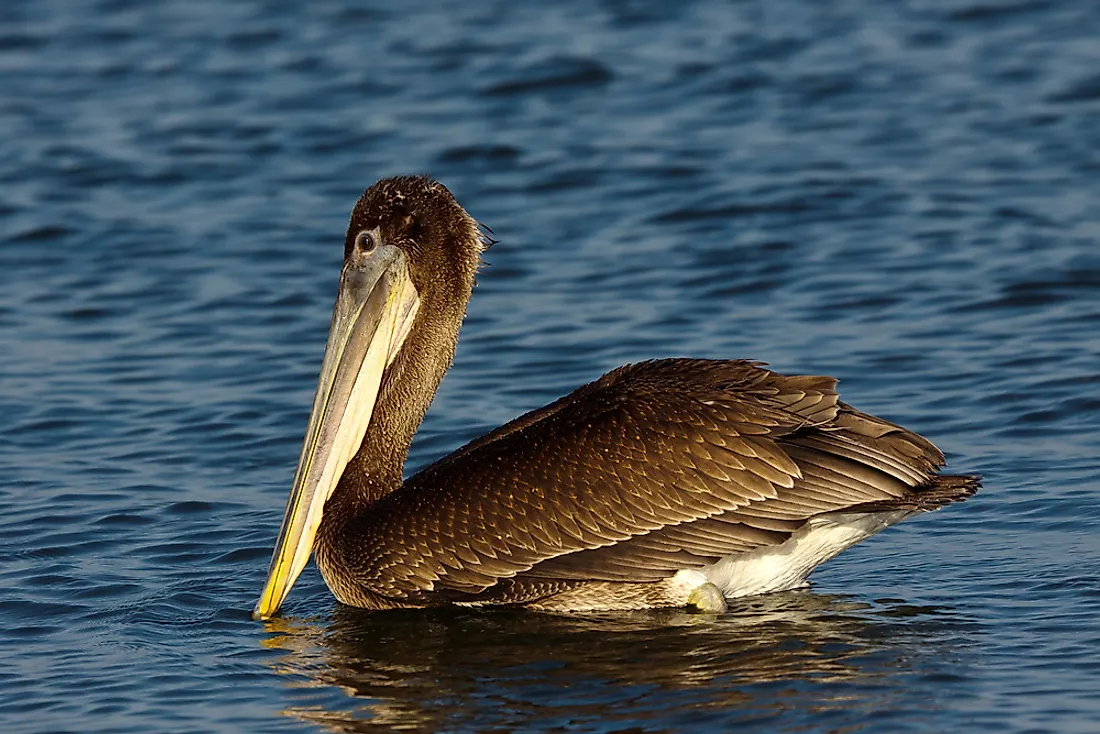
The Pelecanus occidentalis is the smallest of the pelican species and is one of the three species of pelicans that are found in the Americas. The birds breed in the southern and western coastal areas of the US. The length of these birds ranges from 1 to 1.5 meters. The bird has white plumage on the head and neck (with the crown having a yellowish wash), black legs, dark brown and gray streaked back, tail, and rump, and a large bill with a complex color pattern. Fish constitute the majority of the diet of these birds. Occasionally, the brown pelicans also feed on crustaceans and amphibians.
6. Peruvian Pelican
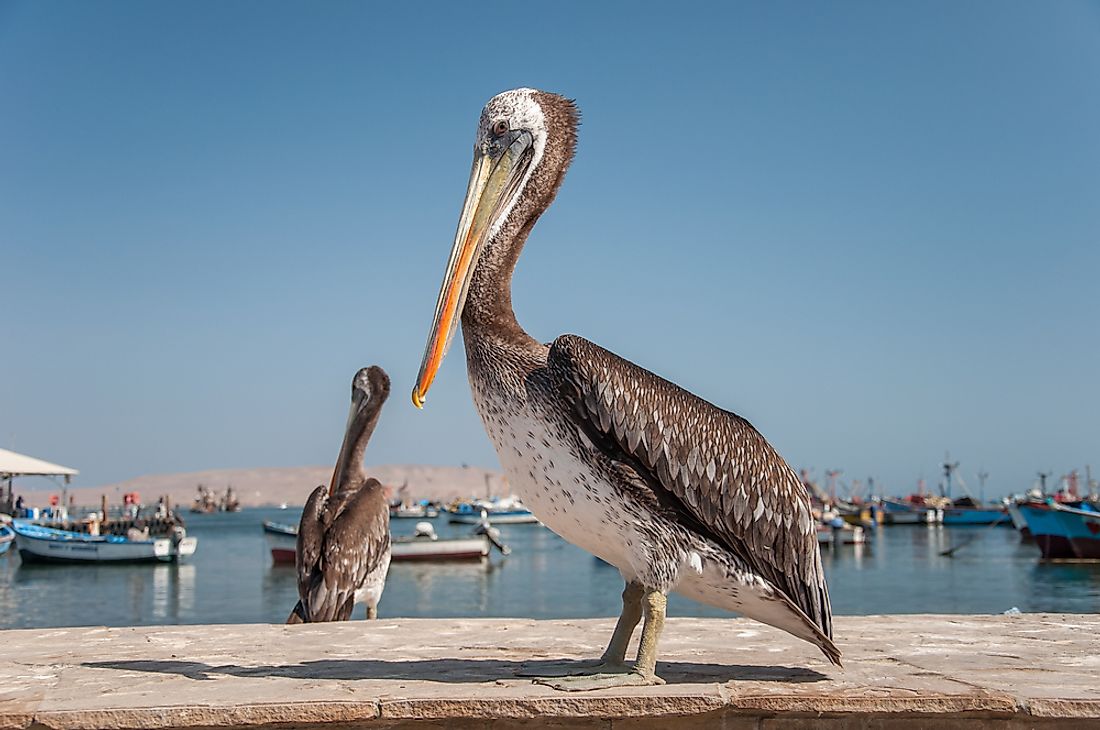
The Pelecanus thagus is one of the 8 species of pelicans living in the world today. These birds primarily live in South America’s west coast. The birds are similar in appearance to the brown pelican and have dark plumage. A white patch runs from the top of the bill up to the crest and then descends as stripes along the sides of the neck. The size of the birds ranges from 4.5 to 5 ft. The birds breed from September to March. The species has been listed as Near Threatened on the IUCN Red List.
5. Great White Pelican/Rosy Pelican/White Pelican
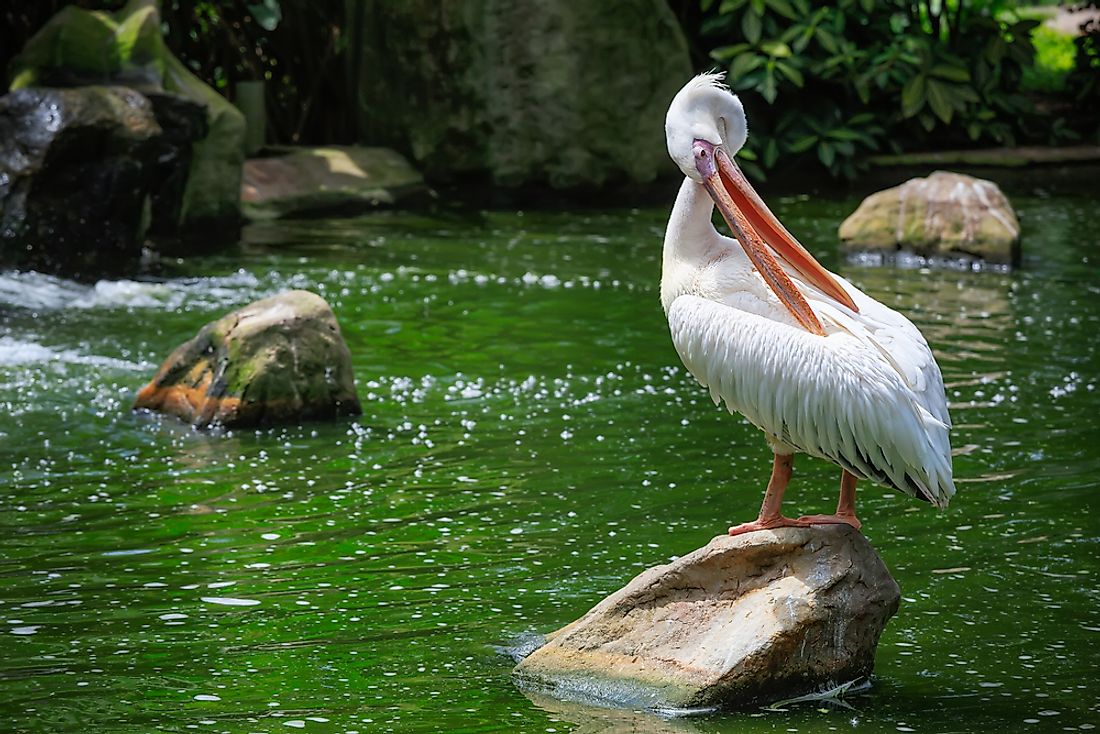
The Pelecanus onocrotalus is a pelican species that has a widespread distribution and occurs in parts of Asia, Africa, and southeastern Europe. The bird prefers to inhabit shallow lakes and swamp habitats. The bird has a huge size with the wingspan ranging from 226 to 360 cm. The length of the species extends from 140 to 180 cm. The great white pelican adults have a pure white plumage, pinkish legs, and a bare pinkish or orangey skin around the eyes. The bill is also brightly colored. Fish is the primary food of these birds. The birds might also feed on other birds, turtles, tadpoles, etc. if they need to supplement their diet or during periods of starvation.
4. Australian Pelican
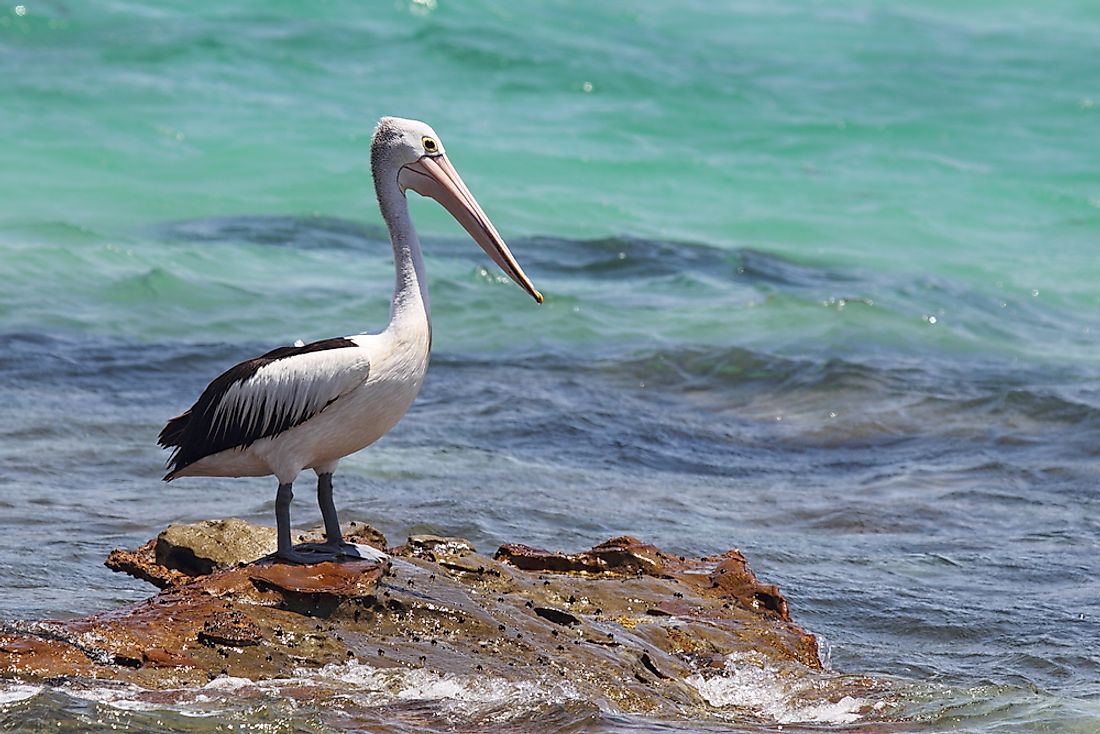
The Pelecanus conspicillatus is found in Australia, Fiji, the island of New Guinea, and parts of Indonesia. Within its range, the species inhabit inland and coastal water habitats. Fish constitute the majority of the diet of these birds. Occasionally, they also supplement their diet with smaller birds and scrap. The Australian pelican is famous for its long, pinkish bill which is the longest among all birds. The longest bill recorded was 50 cm long. The plumage of the bird is predominantly white while the wings are black in color.
3. Pink-backed Pelican
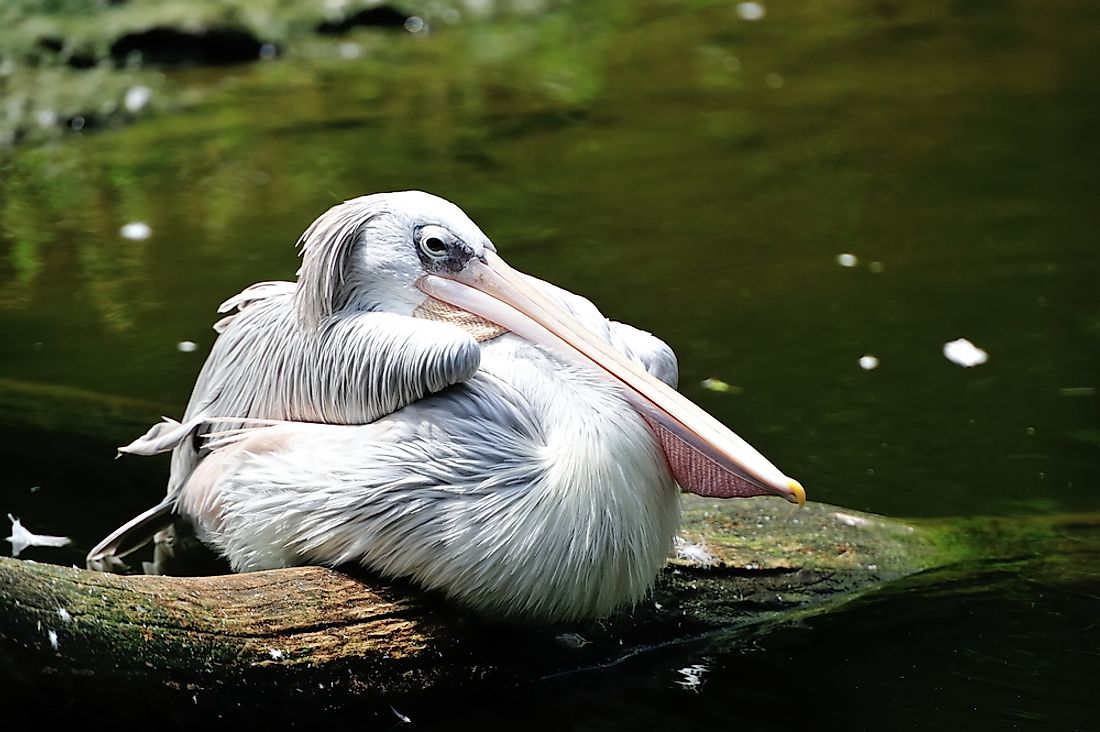
The Pelecanus rufescens is a pelican species that lives in Africa, southern India, and southern Arabia. The bird is one of the smallest pelican species and has a length ranging from 125 to 155 cm. The bird has a gray to white plumage. The bill is yellow at the top and the pouch is generally grayish in color. During the breeding season, the head of the adults has long feather plumes. The birds inhabit a wide variety of aquatic habitats like swamps, lakes, floodplains, seasonal pools, etc. Fish and amphibians constitute the main diet of these birds. The pink-backed pelicans nest in colonies on trees, low bushes or reed beds near water bodies.
2. Dalmatian Pelican
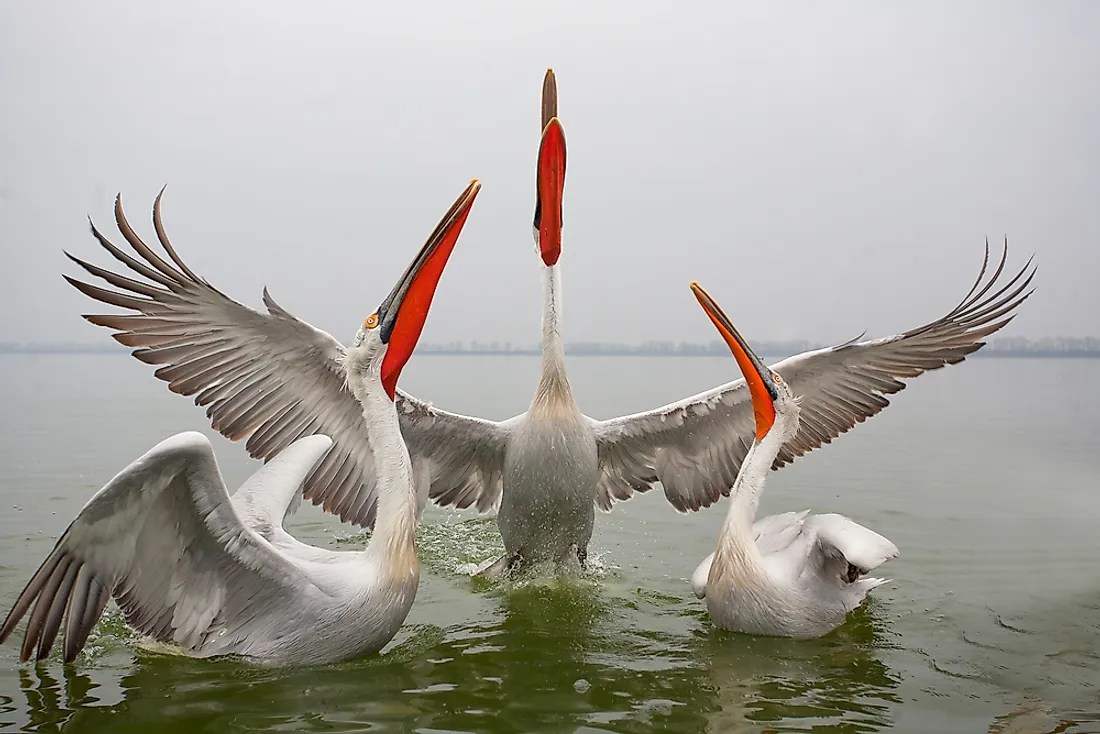
The Pelecanus crispus is the largest freshwater bird in the world. The pelican species is famous for its elegant flight and the graceful synchrony exhibited by the flock during flight. The breeding range of these birds stretches from southeastern Europe to Russia and China and south to the Indian subcontinent. Here, the birds live in swamps and shallow lake habitats. The birds have white silvery-plumage, gray legs, and curly nape feathers. In the non-breeding season, however, the drabber plumage of these birds often leads to their mistaken identity as great white pelicans. Fish constitute their primary diet. The birds are labeled as “Vulnerable” on the IUCN Red List since habitat destruction, degradation, and poaching threatens the survival of the species.
1. Spot-billed Pelican/Gray Pelican
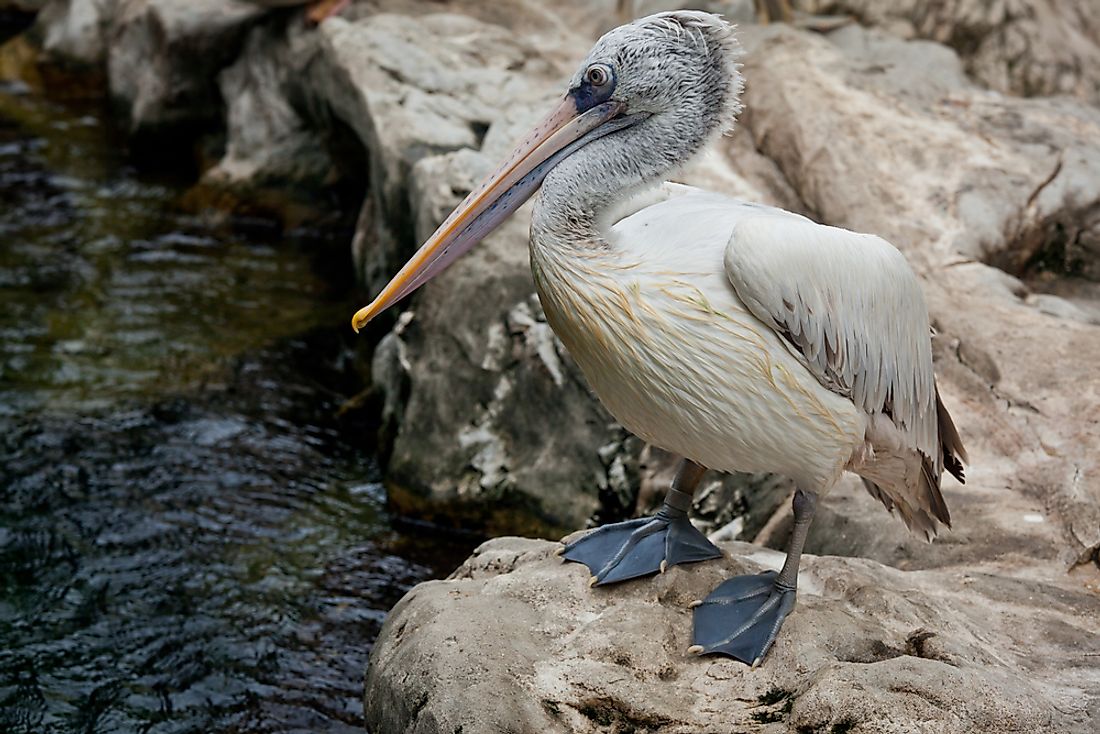
The Pelecanus philippensis is a pelican species that breeds in parts of South Asia and Southeast Asia. The birds have a length ranging between 125 to 152 cm. The birds have a white plumage, brown tail, and gray crest and hindneck. The upper mandible of the bill has spots that give the birds their name. The bill pouch is pink to purplish and also features large, pale spots. The spot-billed pelicans inhabit shallow, lowland freshwater habitats. The birds nest in large colonies on low trees. They feed on fish which they catch as they swim at the surface of shallow water. The species is recognized as Near Threatened by the IUCN.











